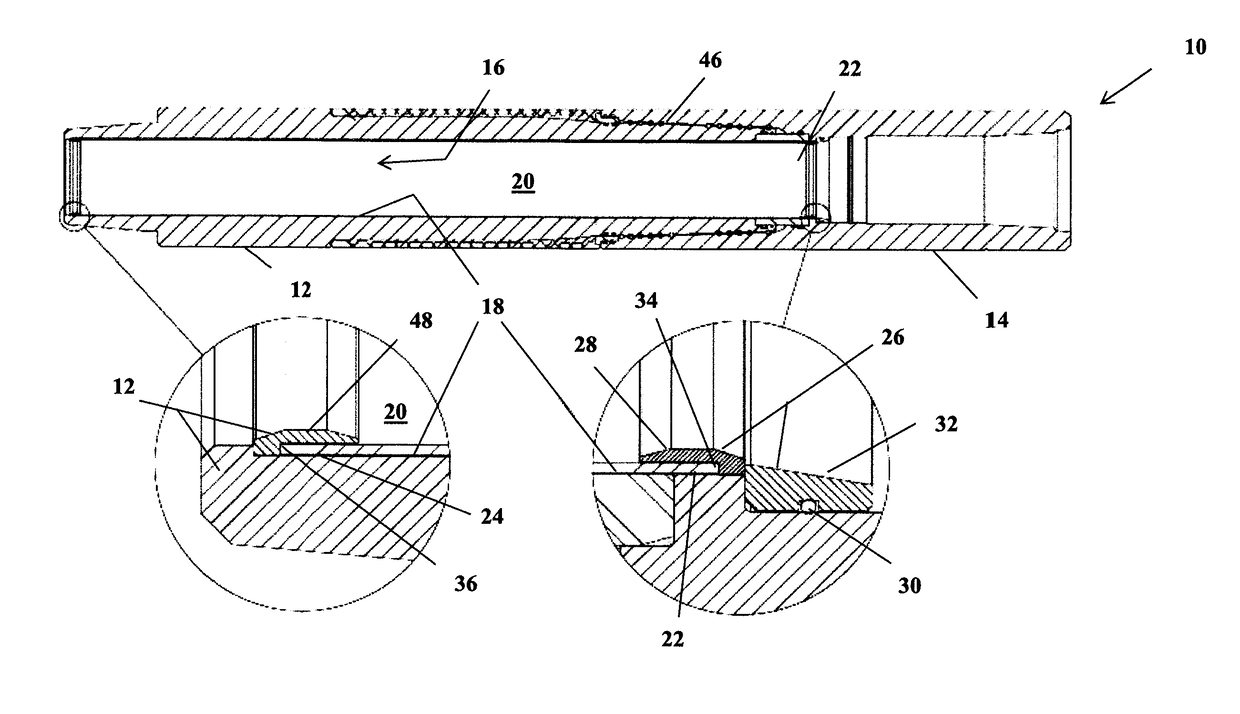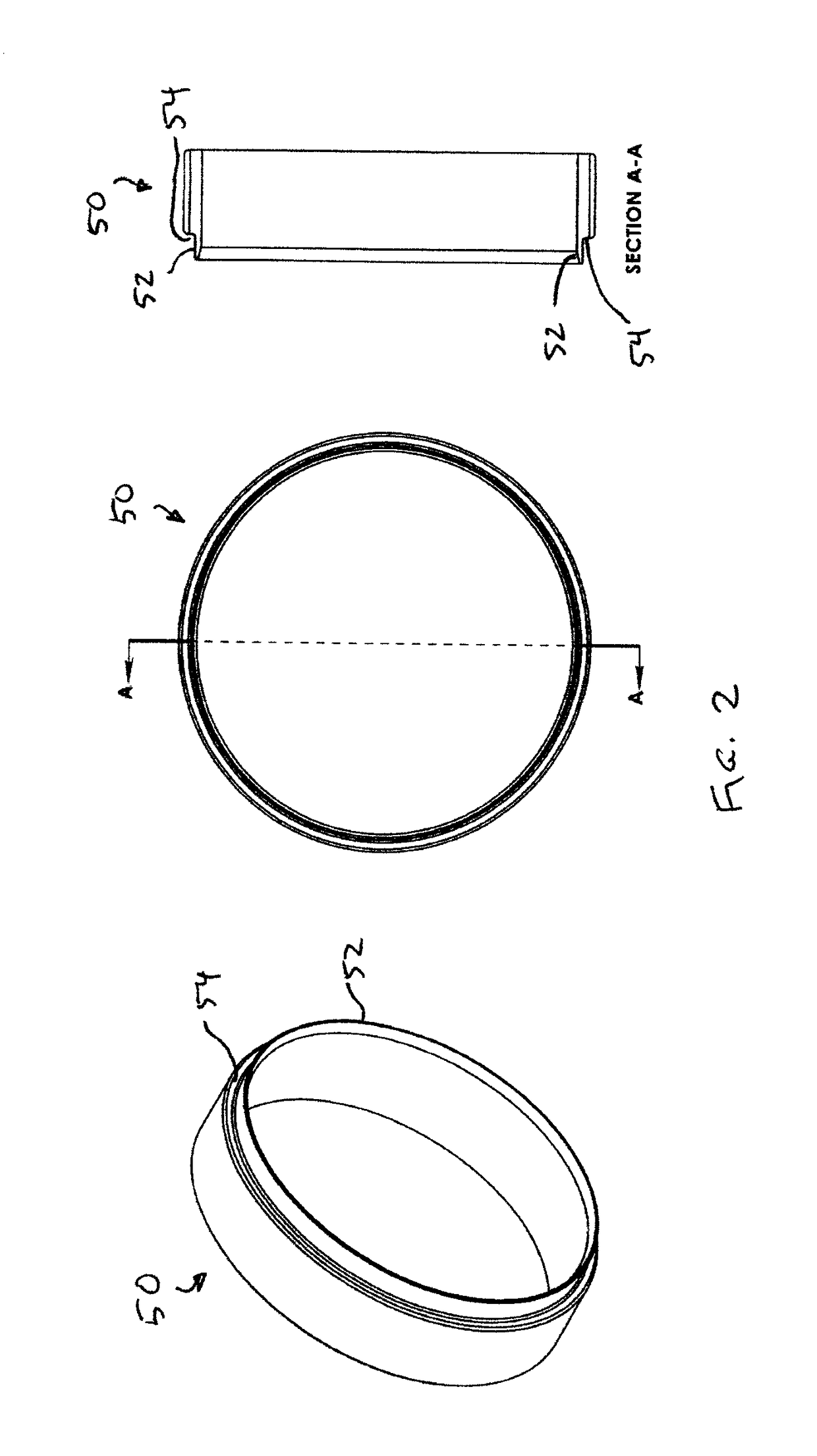Device and method for securing conduit interior wear sleeve
a technology for securing conduit interiors and sleeves, applied in the direction of drilling pipes, coatings, mechanical equipment, etc., can solve the problems of sleeve dislocation, significant negative consequences, and difficulty in removing sleeves, so as to reduce the introduction of sleeves
- Summary
- Abstract
- Description
- Claims
- Application Information
AI Technical Summary
Benefits of technology
Problems solved by technology
Method used
Image
Examples
Embodiment Construction
[0055]Throughout the following description specific details are set forth in order to provide a more thorough understanding to persons skilled in the art. However, well known elements may not have been shown or described in detail to avoid unnecessarily obscuring the disclosure. The following description of examples of the technology is not intended to be exhaustive or to limit the invention to the precise forms of any exemplary embodiment. Accordingly, the description and drawings are to be regarded in an illustrative, rather than a restrictive, sense. For example, although the present invention is illustrated as being applied to a gap sub for use in electromagnetic telemetry operations, the present invention may be applied to any appropriate or suitable protective wear and / or electrical isolation member used with pipes or conduits.
[0056]Turning now to FIG. 1, a gap sub 10 is illustrated. The gap sub 10 comprises a male member 12 and a female member 14 separated by a gap member 46,...
PUM
| Property | Measurement | Unit |
|---|---|---|
| electrically insulative | aaaaa | aaaaa |
| electrically isolative | aaaaa | aaaaa |
| volume | aaaaa | aaaaa |
Abstract
Description
Claims
Application Information
 Login to View More
Login to View More - R&D
- Intellectual Property
- Life Sciences
- Materials
- Tech Scout
- Unparalleled Data Quality
- Higher Quality Content
- 60% Fewer Hallucinations
Browse by: Latest US Patents, China's latest patents, Technical Efficacy Thesaurus, Application Domain, Technology Topic, Popular Technical Reports.
© 2025 PatSnap. All rights reserved.Legal|Privacy policy|Modern Slavery Act Transparency Statement|Sitemap|About US| Contact US: help@patsnap.com



